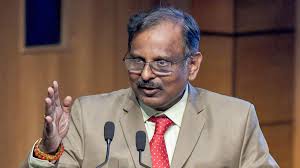India to Restart Direct Air Services with China by Late October
India is preparing to resume direct passenger flights with China after more than four years, an important step to improve connectivity between the two Asian giants. According to officials of the Ministry of Aviation, services are expected to resume by the end of October 2025 under final approval.
Flights start again after a long gap
Direct commercial flights between India and China were suspended in early 2020 after an outbreak of the COVID-19 epidemic. Since then, only special charter flights between the two countries and limited cargo services have been operated. For passengers, the absence of direct flights means traveling from third countries such as Singapore, Hong Kong, Bangkok or Dubai, leading to an increase in both travel time and cost.
Starting services is expected to benefit students, business passengers and tourists from both countries. Thousands of Indian students, especially in Chinese medical universities, are more economical and faster to return to their homes. Similarly, Indian businesses in China hope that smooth air connectivity will support business, investment and corporate cooperation.
Airlines preparing to resume routes
Sources indicate that major carriers like Air India, IndiGo and China Eastern Airlines are preparing to operate flights on busy routes like Delhi -Beejing, Delhi -Shanghai and Mumbai -Guangzhou.
Initially, flights may be limited in frequency – probably 3-4 services per week on each region – but is expected to expand slowly based on the demand for capacity. Airline officials noted that students and commercial travel would probably run the wholesale of early booking, while holiday tourism may take longer to recover.
IndiGo and Air India are also exploring code-share agreements with Chinese carriers to offer passengers more connecting destinations within China.
Significance for Students and Businesses
Refruiting flights comes as a relief for an estimated 23,000 Indian students studying in Chinese universities, many of which struggled with online classes during epidemic and faced delay in returning to campuses when the restrictions were removed.
Business groups are also welcoming this step. Bilateral trade between India and China crossed $ 118 billion in 2024, making China the second largest trading partner in India. Direct air link is expected to reduce corporate travel, help companies manage supply chains more efficiently and allow smooth participation in business fairs, conferences and exhibitions.
Tourism operators are also eyeing opportunities. Popular destinations such as The Great Wall, the prohibited city of Beijing, the sightseeing of Shanghai Disneyland and Tibet are expected to attract Indian travelers, when flight options become cheap and more direct.
Government and diplomatic perspective
While the launching of air services is seen as a commercial decision from re -starting, observers also noted that despite political differences, it reflects a gradual ease of travel sanctions between the two countries. India and China have formed relations due to border tension in recent years, but people have been stronger with business and people.
An official of the Ministry of Civil Aviation of India said:
“Refuying flights with China is part of our broad effort to increase international air connectivity. It will serve mainly students, business communities and those traveling for necessary reasons.”
The Chinese embassy in New Delhi also welcomed the move, saying that direct air connectivity will promote friendship, cooperation and cultural exchange between the two countries.
Ticket prices and travel demand
Currently, passengers traveling between India and China through third countries often pay-60,000-80,000 for a round-trip ticket, and grow up to 12–15 hours at the time of travel. With the resumption of direct flights, fares are expected to fall significantly, while travel time will be reduced by 6-7 hours on the basis of route.
Travel agencies in Delhi and Mumbai are already reporting interrogation of students and corporate customers, who are eager to book once the schedule is officially declared. Online ticketing platforms are expected to list the routes by mid -October.
Safety and regulations
Officials have clarified that all re -launched flights will follow the International Aviation Safety and Health Protocols. Passengers may require vaccination proof or negative covid-19 test results when they are mandatory by Chinese authorities, although most restrictions have decreased in recent months.
The airport in India, including Indira Gandhi International Airport in Delhi and Chhatrapati Shivaji Maharaj International Airport in Mumbai, are preparing to handle passenger versions once flights are restarted once.
Comprehensive aviation reference
India is continuously expanding its international aerial link in 2025. In recent months, new direct flights have been introduced to Australia, Europe and the Middle East as part of the government’s push to make India a global aviation center.
Given the scale of economic and cultural relations between the two countries, adding direct connectivity with China as a missing piece in this expansion. Aviation analysts say that this step can open doors for more cargo movement, which benefits Indian exporters of pharmaceuticals, IT services and agricultural products.
Conclusion
The resumption of direct flights between India and China is more than just a transportation update—it’s a development with social, educational, and economic impact. For students, it brings relief after years of travel challenges. For businesses, it opens smoother trade opportunities. For tourists, it means rediscovering each other’s cultures with ease.
As airlines finalize schedules and governments coordinate approvals, the skies between New Delhi, Mumbai, Beijing, and Shanghai are set to get busier once again—signaling a small but important step toward rebuilding normalcy in India-China ties.













